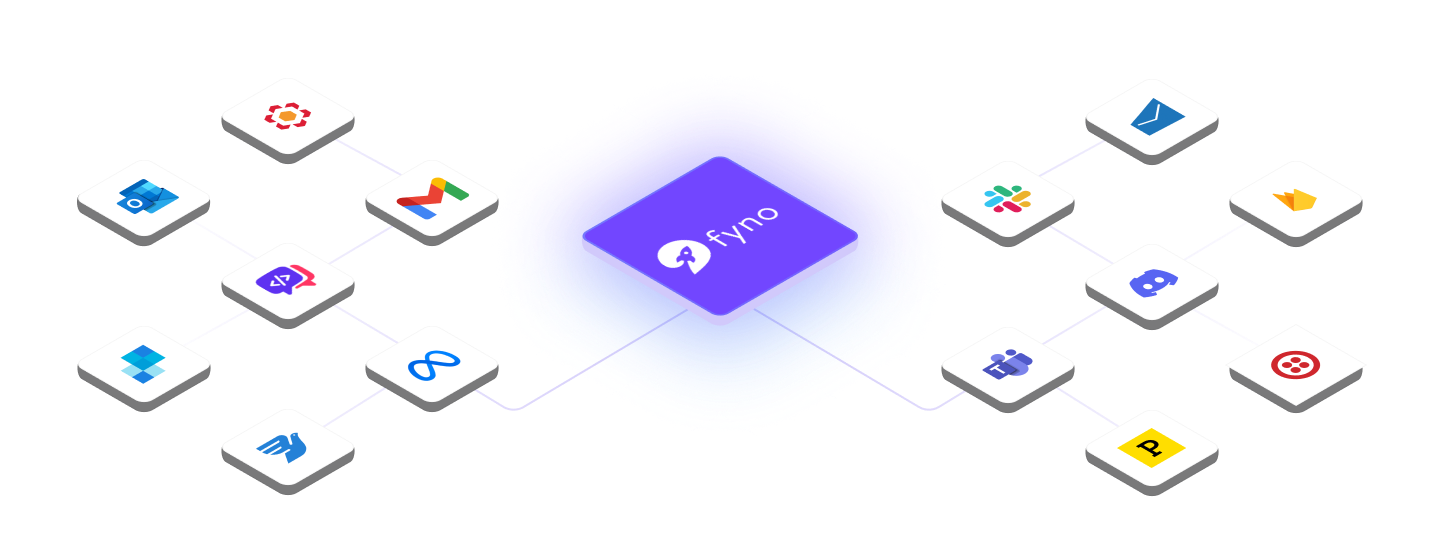
Introduction
In 2023, as markets continue to shift, competition intensifies, and consumer expectations reach new heights, the importance of customer engagement has never been more pronounced.
Some statistics around customer engagement in 2023,
- A significant majority, 67% of consumers, express that the need to repeat their information multiple times would lead them to quit shopping with a business.
- Businesses that effectively connect with their B2B customers experienced a substantial 63% reduction in customer attrition.
- Nearly half of consumers, 48%, indicate that they would quit a brand if their experience lacks personalization.
Thousands of SaaS platforms offer many tools and technologies that enable businesses to engage with their customers meaningfully. From proactive communication infrastructure and AI-powered assistants to data analytics and CRM integration, the toolbox for customer engagement has expanded exponentially.
In this blog, we'll explore nine must-have customer engagement tools that should be on your radar in 2023, empowering you to stay ahead of the curve and create meaningful connections with your customers, prospects or audiences.
9 essential customer engagement tools to power your business
Here is the list of our top customer engagement tools,
1. Proactive communication system
Proactive notification systems enable businesses to communicate critical updates and communications, making them indispensable to any modern business strategy.
Some of the best proactive notification infrastructures are Fyno, Courier & Knock
Important features of Proactive notification infrastructure
Ready integrations: Seamless and ready integration with communication service providers and channels like Email, Chat, WhatsApp, SMS, Push and In-App.
Template management: No-code, drag-and-drop editor to create and manage templates that are compatible with multiple channels.
No-code routing: Drag-and-drop routing workflow creation with multi-point triggers and, more importantly, the fail-over protocols to achieve 99.9% delivery.
Analytics: Real-time analytics on delivery rates, open rates, and click rates across all channels and know which channel works best for your customer.

2. User Analytics Tools
User analytics tools are the backbone of data-driven customer engagement strategies. They offer invaluable insights into user behavior and preferences, enabling businesses to optimize their approach.
Some popular user analytics tools include Google Analytics, Mixpanel and Segment.
Must-Have Features of a User Analytics Tool:
Comprehensive Data Tracking: A robust user analytics tool should capture a wide range of data, including user interactions, session durations, click-through rates, and more. This comprehensive data collection provides a holistic view of user behavior.
Advanced Segmentation: Effective user analytics tools allow for advanced segmentation based on user attributes, behaviors, or demographics. This feature enables businesses to target specific user groups with tailored content and engagement strategies.
Real-Time Reporting: Timeliness is crucial in the fast-paced digital landscape. A top-tier user analytics tool provides real-time reporting and insights, allowing businesses to react swiftly to user trends and make informed decisions to enhance customer engagement.
3. Multi-channel customer support platforms
Multi-channel customer support platforms have revolutionized the way businesses engage with their customers. These versatile tools enable companies to connect with users across various communication channels, fostering better engagement.
Some popular Multi-channel customer support platform tools include Hiver, Intercom, Zendesk and Freshdesk
Must-Have Features of Multi-Channel Customer Support Platforms:
Unified Inbox: A multi-channel customer support platform offers a unified inbox that consolidates messages from email, chat, social media, and more. This centralized view ensures that customer inquiries are efficiently managed, preventing the risk of overlooking or duplicating responses.
Omnichannel Capabilities: Seamlessly switching between channels while maintaining a consistent conversation thread is vital. Multi-channel support platforms allow agents to provide uninterrupted support, whether customers reach out via email, chat, phone, or social media, resulting in a more cohesive and engaging experience.
Integration with Customer Data: These platforms should integrate with customer data and history to deliver personalized products, support and engagement. Agents can access valuable insights, such as previous interactions and purchase history, empowering them to provide tailored solutions and build stronger relationships with customers.
4. Social media management software
Social media management software has become indispensable for businesses seeking to enhance customer engagement in the digital age. These platforms empower organizations to manage their social media presence efficiently, interact with customers, and deliver compelling content.
Some popular Social media management software include HubSpot Marketing Hub, Zoho Social, Sprout Social and SocialPilot
Must-Have Features of Social Media Management Software:
Centralized Content Scheduling: A key feature of social media management software is the ability to schedule and publish posts across multiple social media platforms from a centralized dashboard. This streamlines content distribution, ensuring a consistent and engaging online presence.
Social Listening and Monitoring: Effective engagement starts with listening to what customers are saying. These tools provide social listening capabilities, tracking brand mentions and relevant conversations. This enables businesses to respond promptly to customer inquiries, feedback, and concerns, fostering a more meaningful dialogue.
Analytics and Reporting: Comprehensive analytics and reporting features are essential for gauging the effectiveness of social media engagement efforts. Social media management software offers insights into engagement metrics, audience demographics, and post performance, allowing businesses to refine their strategies and deliver more relevant content to their target audience.
5. Feedback and survey apps
Feedback and survey apps have emerged as potent tools for customer engagement, offering businesses a direct line to gather valuable insights and opinions from their audience. These applications facilitate two-way communication, enabling companies to effectively listen, understand, and respond to customer needs.
Some popular Feedback and survey apps include SurveyMonkey, Google Forms, Typeform and Zoho Survey.
Must-Have Features of Feedback and Survey Apps:
Customizable Survey Templates: Feedback and survey apps should offer a variety of customizable templates to create surveys tailored to specific objectives. These templates allow businesses to gather feedback on various aspects, from product satisfaction to customer service experiences, ensuring relevance and effectiveness.
Multi-Channel Distribution: To engage a broad audience, these apps should support multi-channel distribution, including email, social media, and website embedding. This feature ensures that surveys reach customers where they are most comfortable, maximizing response rates and engagement.
Real-Time Analytics and Reporting: Comprehensive analytics and reporting capabilities are essential. Businesses should be able to access real-time insights into survey responses, enabling them to identify trends, track customer sentiment, and make data-driven decisions to improve products, services, and overall customer engagement.
6. A/B testing software
A/B testing software has become a linchpin in customer engagement strategies, allowing businesses to optimize their marketing and user experience efforts. A/B testing enables organizations to make data-driven decisions that improve customer engagement by comparing two variations of a webpage, email, or campaign.
Some popular A/B testing software includes Google Optimize, Unbounce, Adobe Target and Optimizely.
Must-Have Features of A/B Testing Software:
Effortless Experiment Setup: A/B testing software should provide a user-friendly interface for setting up experiments without requiring advanced technical skills. It should enable businesses to effortlessly create variations of web pages, emails, or content elements to test different strategies, ensuring a seamless and efficient testing process.
Accurate and Real-Time Reporting: To make informed decisions, A/B testing software must offer accurate and real-time reporting of experiment results. It should provide insights into key metrics like click-through rates, conversion rates, and engagement levels, allowing businesses to quickly identify winning variations and optimize their customer engagement strategies accordingly.
Segmentation and Targeting Options: Effective A/B testing involves segmenting and targeting specific audience groups. The software should offer advanced segmentation and targeting options based on user demographics, behavior, or other criteria. This enables businesses to tailor their experiments to different customer segments, delivering a more personalized and engaging experience.
7. User onboarding platforms
User onboarding platforms play a pivotal role in shaping the initial interactions between customers and a product or service. These tools guide users through the onboarding process, helping them understand and utilize the offering effectively. In addition to the initial setup, user onboarding platforms contribute significantly to long-term customer engagement.
Some popular User onboarding platforms include Userpilot, Appcues, Whatfix and Pendo.
Must-Have Features of User Onboarding Platforms:
Interactive Tutorials and Guides: User onboarding platforms should offer interactive tutorials and step-by-step guides that introduce users to essential features and functionalities. These guides should be engaging and user-friendly, making it easy for customers to grasp the value of the product quickly.
Personalization and Segmentation: Effective user engagement often depends on providing tailored experiences. User onboarding platforms should allow for personalization and segmentation, enabling businesses to create unique onboarding journeys based on user preferences, behavior, and specific needs.
Progress Tracking and Analytics: To continuously improve the onboarding process and overall customer engagement, these platforms should offer progress tracking and analytics. This feature helps businesses identify where users may face challenges or drop off during onboarding, enabling them to make data-driven improvements and keep users engaged throughout their journey.
8. Knowledge base platforms
Knowledge base platforms have become indispensable tools for enhancing customer engagement. These platforms serve as comprehensive repositories of information, offering customers self-service options and access to vital product or service-related knowledge.
Some popular knowledge base platforms are Helpscout, Document360 and HIver.
Must-Have Features of Knowledge Base Platforms:
Searchable Content: Knowledge base platforms should provide a robust search functionality, allowing users to quickly and easily find the information they need. This ensures a seamless and efficient self-service experience, reducing the need for direct customer support and keeping users engaged.
Multimedia Support: To engage a diverse audience, knowledge-based platforms should support various content formats, including text, images, videos, and interactive elements. This versatility enables businesses to convey information in a way that resonates best with their customers, enhancing comprehension and engagement.
Analytics and Feedback Integration: These platforms should offer analytics and feedback integration to continuously improve the knowledge base and its effectiveness in customer engagement. This feature enables businesses to track user interactions, identify popular content, and gather insights from customer feedback, allowing them to refine and expand their knowledge base to serve their audience better.
9. Conversational chatbots
Conversational chatbots have revolutionized customer engagement, providing businesses a versatile real-time tool to interact with customers. These AI-powered virtual assistants facilitate seamless, automated conversations and deliver quick responses, assistance, and personalized experiences.
Some popular conversational chatbots are Intercom, Kore.ai and Drift
Must-Have Features of Conversational Chatbots:
Natural Language Processing (NLP): Effective conversational chatbots are equipped with NLP capabilities, enabling them to understand and respond to user queries in a human-like manner. This feature ensures that customers have a smooth and natural interaction with the bot, increasing engagement and satisfaction.
Multi-Channel Integration: To engage customers across various touchpoints, chatbots should integrate seamlessly with multiple communication channels, including websites, mobile apps, social media, and messaging platforms. This omnichannel capability ensures that customers can access assistance wherever they prefer, enhancing accessibility and engagement.
Personalization and Context Retention: Conversational chatbots that can remember previous interactions and personalize responses based on user history and preferences are highly effective. This feature creates a more personalized and engaging experience, as customers feel understood and valued by the bot, leading to improved customer engagement and loyalty.


